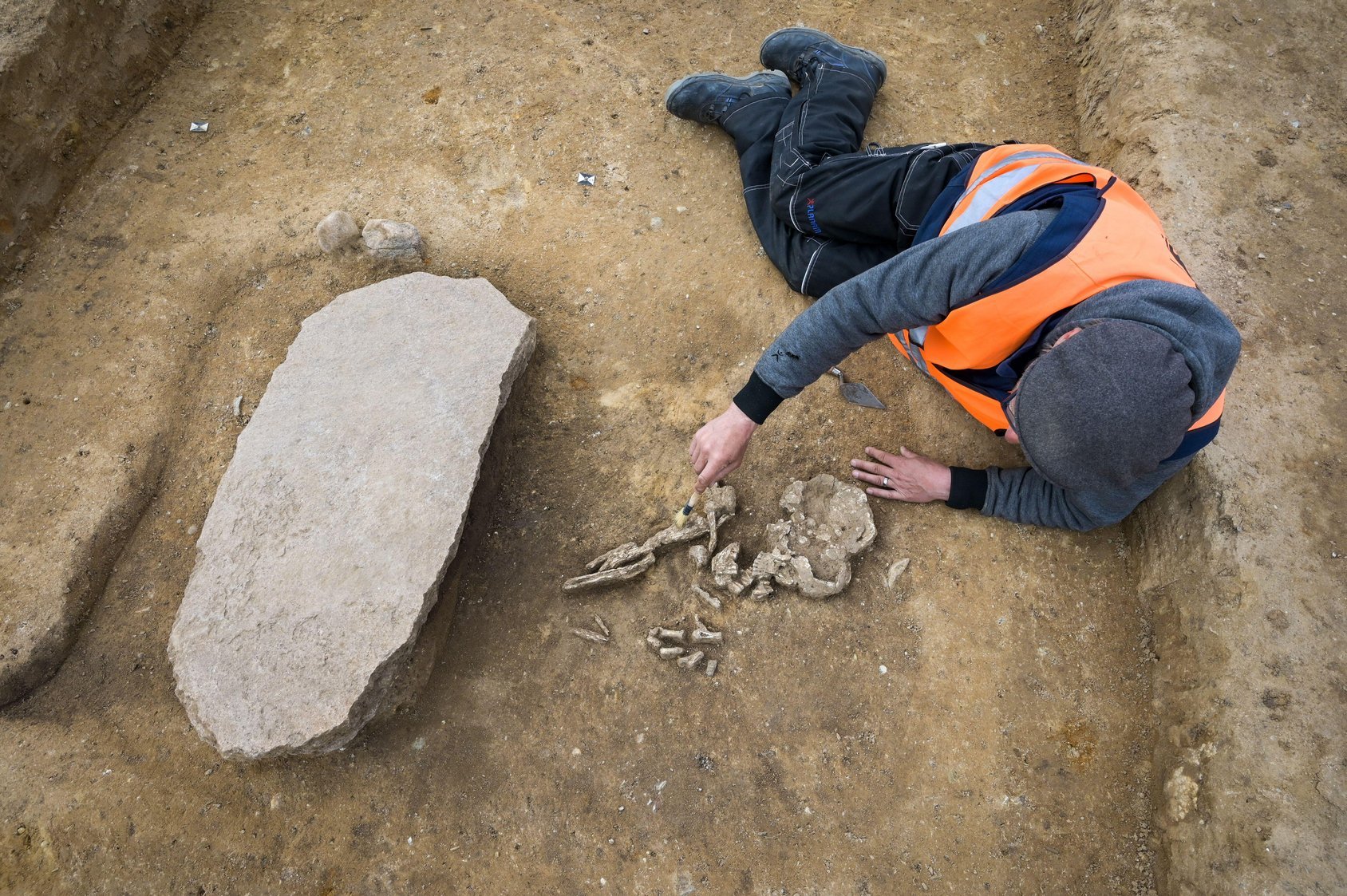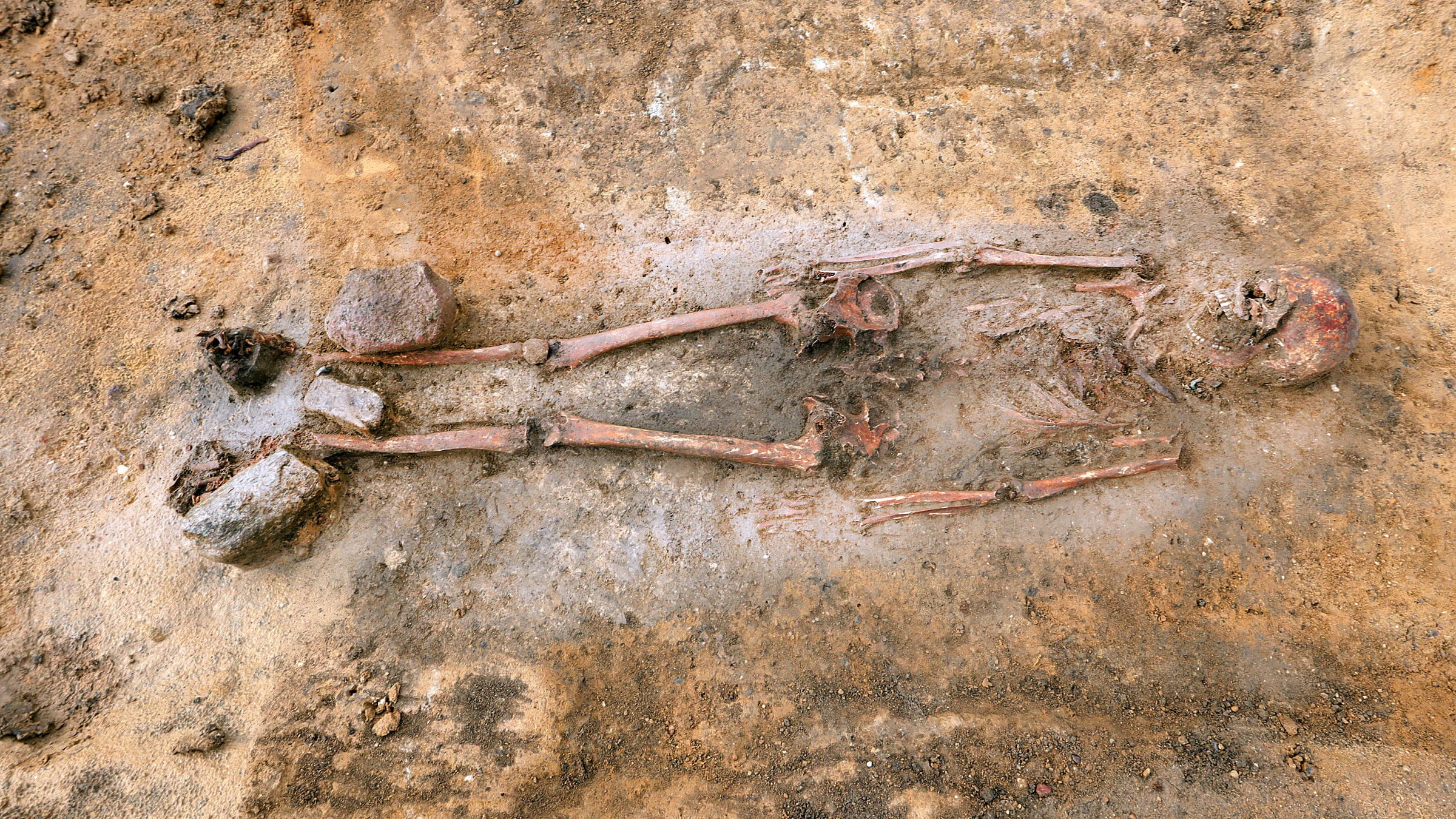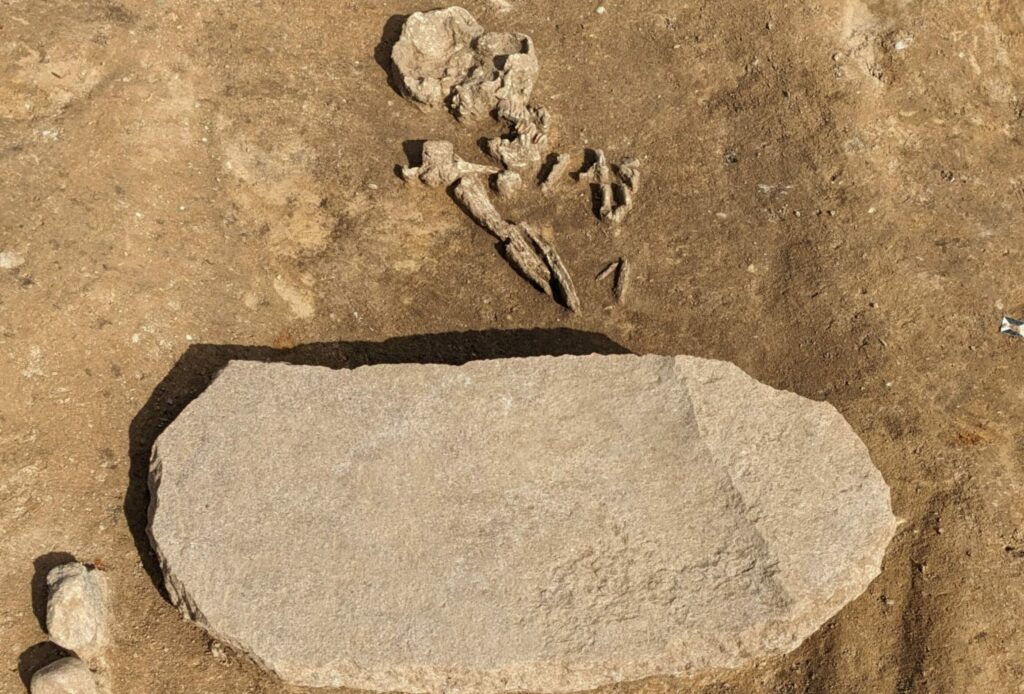In an intriguing archaeological discovery near Oppin in Saxony-Anhalt, a 4,200-year-old Neolithic “zombie grave” has been uncovered, shedding light on ancient burial customs and superstitions. This grave, associated with the Bell Beaker culture, holds the remains of an adult male who was intentionally secured beneath a large stone, likely to prevent him from rising and posing a threat to the living. This find marks the first instance of such a burial from this era in central Germany, providing a rare window into the fears and beliefs of our ancestors.
The Neolithic “Revenant Grave”
During excavations for a power line expansion, archaeologists discovered the grave of a male estimated to be between 40 and 60 years old. Unlike standard burials from that time, this grave lacked accompanying items, and the body was positioned on its left side with legs bent. A substantial stone, over three feet long, a foot-and-a-half wide, and four inches tall, was placed across the lower legs. Weighing around 110 pounds, this stone was intentionally placed to ensure the deceased remained interred.

Evidence of Ancient Superstitions
Project manager and archaeologist Susanne Friederich explained that this atypical burial illustrates the Stone Age belief in “revenants,” or the undead. “We know that even during the Stone Age, there was a fear of unsettling revenants. People sought to ward this off through magical means,” Friederich remarked. Other graves from this period have also been discovered with similar precautions, where corpses were positioned face down or pierced with a lance to deter them from rising. These practices highlight the profound fear of the dead returning to haunt the living.
A Pattern of Unconventional Burials

This recent find is not an isolated case in the area. Last November, Friederich and her team found another suspected revenant burial in the Oppin region, dating back to the 2nd or 3rd century. In this instance, three heavy stones were placed on the deceased’s legs, and a bronze fibula discovered in the grave suggested that this individual held some status. Interestingly, a female skeleton was found nearby without any anti-revenant measures, indicating that such practices were selectively employed. The outline of a nearby house raises questions about whether the two individuals resided there, adding to the mystery surrounding their deaths.
Ongoing Excavations and Future Research
The skeletal remains from the Neolithic grave have been meticulously recovered and sent to a laboratory in Halle for further analysis. The ongoing excavations along the power line route span over 90 miles through Saxony-Anhalt, with plans for a total of 335 miles. These excavations are set to continue until 2025, potentially revealing more graves and artifacts that could enrich our understanding of this extraordinary find.
Conclusion
The identification of the 4,200-year-old “zombie grave” in Saxony-Anhalt serves as a remarkable testament to the ancient beliefs and rituals of the Bell Beaker culture. The deliberate efforts to prevent the deceased from rising illustrate compelling insights into the fears that influenced burial practices at the time. As excavations progress, further research may uncover additional information about the lives and deaths of these ancient peoples, illuminating the cultural and spiritual landscape of Neolithic Europe.

